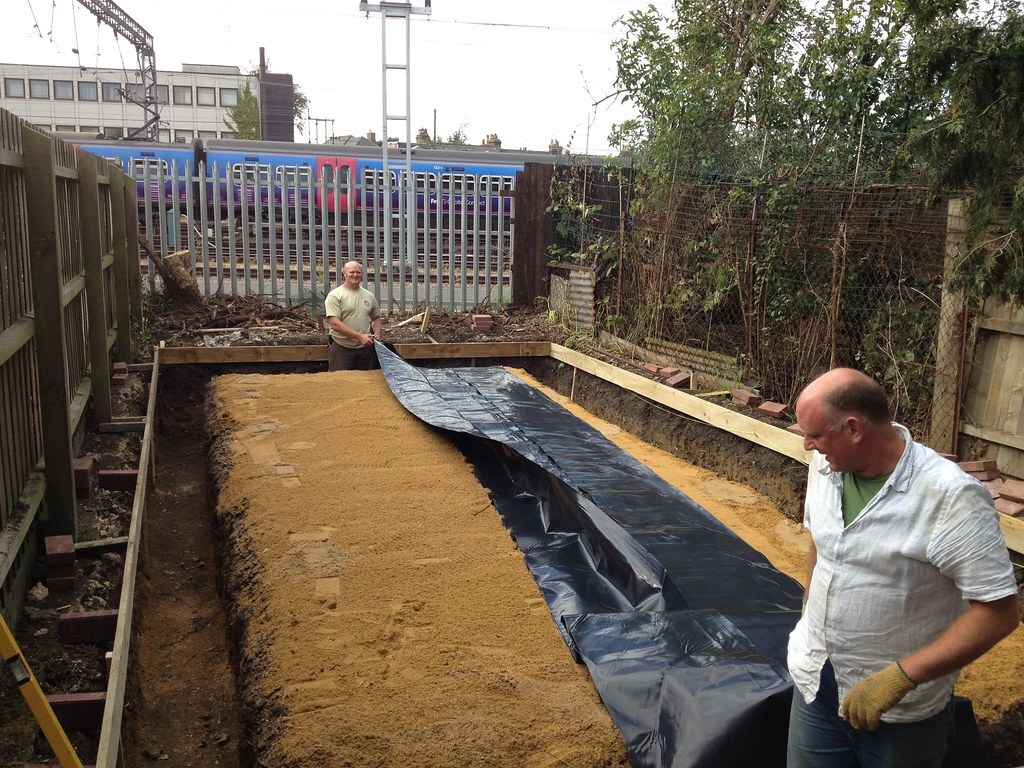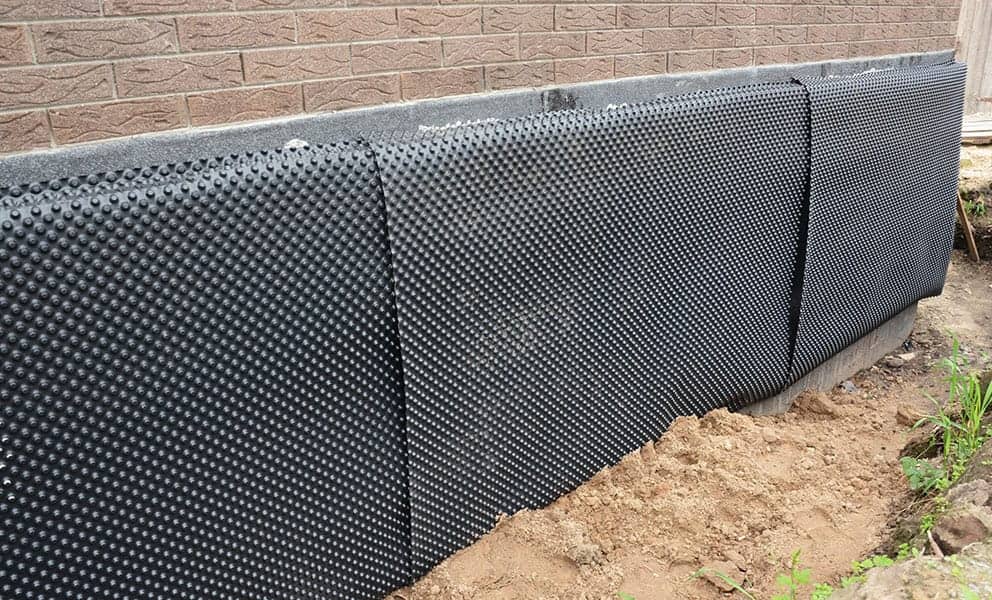Step-by-step guide for damp specialist newcastle to identify moisture issues early
Step-by-step guide for damp specialist newcastle to identify moisture issues early
Blog Article
Discovering the Numerous Methods and Solutions for Effective Damp Proofing
Moisture in buildings postures considerable challenges to both structural stability and interior air top quality. Various methods and options have actually emerged to combat this pervasive issue. From typical damp-proof membranes to innovative chemical treatments, each method provides special benefits. Understanding these options is essential for effective moisture control. Choosing the ideal remedy depends on certain building conditions and demands, motivating more expedition right into the most efficient damp proofing methods offered.
Comprehending the Root Causes Of Wetness
Although dampness can occur from various resources, comprehending these causes is vital for reliable remediation. Frequently, dampness originates from three key sources: rising wet, permeating wet, and condensation. Increasing wet happens when groundwater takes a trip up-wards through permeable materials, such as brick or rock, often as a result of an absence of a reliable obstacle (mould treatment newcastle). Penetrating moist is generally brought on by external variables, consisting of roof covering leakages, defective seamless gutters, or damaged wall surfaces, enabling water to infiltrate a property. Condensation, on the various other hand, arises from excess dampness in the air, usually exacerbated by bad air flow and temperature differences, causing water beads basing on surface areas. Identifying these underlying issues is necessary, as each type of dampness requires a tailored technique for remediation. Correct evaluation aids in identifying one of the most effective remedies, inevitably safeguarding the structural integrity of a building and boosting interior air high quality
Typical Damp-Proof Membrane Layers

Chemical Damp-Proofing Solutions
Chemical damp-proofing services offer an innovative technique to stop wetness breach in buildings. These approaches normally involve the application of liquid chemicals that pass through masonry and develop a barrier against climbing damp. Typically made use of chemicals consist of silanes, siloxanes, and various other water-repellent representatives that react with surface area products to create a hydrophobic layer.The application process generally needs exploration holes into the walls, infusing the chemical solution, and enabling it to heal. This approach is particularly helpful for older structures where standard damp-proof membrane layers may be unwise. Chemical damp-proofing can be much less turbulent and extra cost-effective than comprehensive restoration projects.While efficient, these options depend on appropriate application and ecological conditions for peak performance. damp removal newcastle. Normal upkeep and surveillance are important to assure the long life of the damp-proofing therapy. In general, chemical damp-proofing represents a flexible alternative for safeguarding buildings versus moisture-related damages
Dental Caries Wall Building Techniques
Cavity wall surface building and construction techniques offer many benefits, especially in wetness control and power performance. By including an air space between two layers of stonework, these wall surfaces successfully minimize water access while enhancing insulation. This combination not just shields frameworks from dampness but additionally contributes to reduced energy usage.
Benefits of Dental Caries Wall Surfaces
When thinking about effective moist proofing methods, the benefits of cavity walls stand apart plainly. Tooth cavity wall surfaces include 2 separate layers, producing an air gap that successfully decreases wetness penetration. This style decreases the danger of wetness, as the outer wall works as a barrier against rain and water access. In addition, cavity wall surfaces boost thermal insulation, which contributes to energy efficiency by minimizing heat loss. They also give sound insulation, helping to create a quieter interior atmosphere. The air space enables for air flow, which helps in moisture control and decreases the probability of mold and mildew development. These advantages not just boost the total comfort of a structure yet additionally add to its longevity and structural integrity.
Wetness Control Methods
Efficient wetness control methods are crucial in dental caries wall surface building to assure lasting defense against moisture. One primary method includes the incorporation of weep openings, which assist in water drainage from the dental caries, stopping accumulation. Additionally, using breathable membranes can aid manage wetness levels while enabling entraped vapor to leave. Correct placement of insulation is additionally essential, as it ought to not block drainage paths. In addition, guaranteeing that the external fallen leaves of the tooth cavity wall surface are created with waterproof materials boosts overall sturdiness. Routine upkeep checks are vital to determine any kind of clogs or damages early, safeguarding the structure's integrity. Eventually, a combination of these methods get more info creates a durable protection versus dampness breach in cavity walls.
Insulation and Power Performance
Insulation plays an essential role in enhancing energy efficiency within cavity wall building and construction. By including insulating materials, these walls create a thermal barrier that minimizes heat loss and decreases energy usage. Efficient insulation not just assists preserve a steady indoor temperature however likewise minimizes the danger of wetness, as it prevents condensation within the wall surface tooth cavity. Different techniques, such as using inflexible foam boards or mineral woollen, can be utilized to accomplish optimal insulation performance. Additionally, correct installment is important to ensure that spaces and voids are lessened, which can otherwise compromise power effectiveness. Ultimately, a well-insulated cavity wall surface contributes greatly to total sustainability and reduces heating & cooling prices for home owners.
External Damp Proofing Methods
External wet proofing methods are important for protecting structures from wetness seepage. 2 efficient methods consist of the application of water resistant membrane layers and the installation of French drains. These services help alleviate water accumulation and maintain the stability of structures.
Waterproof Membrane Application
While different approaches exist for stopping dampness ingress, the application of water resistant membrane layers stays a very effective external moist proofing strategy. These membranes are typically made from materials such as polyethylene, rubber, or customized asphalt, giving a robust barrier against water infiltration. The installment procedure involves applying the membrane to the exterior surface areas of structures or wall surfaces, making certain full insurance coverage to stop leakages. Appropriate bond and sealing at joints are critical to making best use of effectiveness. Water resistant membranes can be applied in different types, including liquid finishes and sheet membrane layers, enabling adaptability based on the particular demands of the structure. This technique not only protects buildings from wetness yet additionally boosts their long life and structural stability.
French Drain Installation
One reliable approach for handling groundwater and stopping wetness accumulation around a building's structure is the setup of a French drain. This drainage system includes a trench filled up with gravel and a perforated pipe that reroutes surface water away from the structure. Appropriate installation calls for cautious planning, ensuring that the drainpipe inclines far from the structure to facilitate ideal water circulation. Furthermore, the location of the drainpipe is vital; it needs to be positioned in locations susceptible to pooling or excess wetness. Regular upkeep, including clearing up debris from the crushed rock and ensuring the pipeline remains unobstructed, is vital for long-term efficiency. Eventually, a well-installed French drainpipe can significantly decrease the danger of water-related problems in foundations and basements.
Inside Waterproofing Techniques
Interior waterproofing methods are vital for safeguarding a structure's interior from wetness seepage and potential water damage. These approaches commonly include the application of customized products and techniques created to develop a moisture barrier within the framework. One usual approach is using waterproof layers or sealants on wall surfaces and floorings, which protect against wetness from passing through surfaces.Additionally, mounting interior drain systems, such as sump pumps, can successfully take care of water buildup in basements and crawl spaces. Another technique involves the usage of vapor obstacles, which are mounted to hinder dampness activity from the ground right into living spaces.Moreover, addressing any type of fractures or voids in walls or foundations with suitable sealants guarantees a thorough defense versus water breach. By applying these indoor waterproofing techniques, homeowner can significantly decrease the risk of mold and mildew development, architectural damage, and other moisture-related concerns. Proper implementation of these strategies is necessary for long-lasting security and building honesty.
Normal Maintenance and Evaluation Practices
Normal upkeep and examination methods are important for guaranteeing the lasting performance of moist proofing solutions in any kind of structure. Regular checks allow homeowner to identify very early signs of dampness invasion, such as peeling paint, mold and mildew development, and musty smells. These indicators can signify underlying issues that require instant attention.Inspections ought to be performed at the very least annually, concentrating on at risk locations like basements, creep spaces, and exterior wall surfaces. During these analyses, residential property proprietors ought to check out sealants, water drainage systems, and ventilation to confirm they operate correctly.Additionally, maintaining seamless gutters and downspouts is crucial, as clogged systems can cause water buildup near the foundation. Implementing a routine maintenance schedule, in addition to timely repair services, can substantially prolong the life expectancy of damp proofing actions and shield the structural stability of the structure. Aggressive actions ultimately add to the overall health and wellness of the living setting.
Frequently Asked Questions
How Long Does Damp Proofing Typically Last?
The duration of damp proofing effectiveness differs, generally lasting between 20 to 50 years. Elements such as application high quality, ecological conditions, and maintenance practices considerably influence the longevity of the damp proofing treatment.

Can I Damp Evidence My Home Myself?
The individual contemplated the usefulness of do it yourself damp proofing. With correct research and the right materials, it is feasible. Nonetheless, they additionally identified the importance of specialist advice to assure durable efficiency and protect against future issues.
What Are the Indicators of Inefficient Damp Proofing?
Indications of ineffective wet proofing consist of consistent musty smells, noticeable mold and mildew growth, peeling off paint, moist patches on wall surfaces, and wood degeneration - damp removal newcastle. Home owners must deal with these concerns promptly to avoid more damage and health worries
Does Damp Proofing Affect Indoor Air Quality?

Just How Much Does Specialist Damp Proofing Cost?
Expert damp proofing expenses differ significantly, typically ranging from $1,000 to $5,000 relying on the home's dimension, the extent of the moist concern, and chosen techniques. Each scenario requires a customized analysis for accurate prices. Generally, moisture originates from three main resources: climbing damp, permeating moist, and condensation. When taking into consideration effective moist proofing techniques, the benefits of cavity walls stand out plainly. External damp proofing techniques are necessary for protecting structures from moisture infiltration. While various techniques exist for stopping dampness ingress, the application of waterproof membranes remains a highly reliable external moist proofing method. Signs of inadequate wet proofing consist of persistent stuffy smells, visible mold and mildew development, peeling off paint, moist spots on wall surfaces, and timber decay.
Report this page